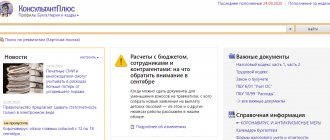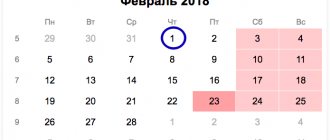Home / Real estate / Land / Taxes
Back
Published: March 31, 2017
Reading time: 12 min
0
606
Land tax is a mandatory gratuitous payment that must be made to land owners. Land tax is collected in favor of the local budget.
Taxation of land plots in Russia is determined by Chapter 31 of the Tax Code of the Russian Federation. Land tax is a collection of local importance. The tax itself and the advance payment for it must be paid to the budgets of district administrations at the location of the land plot.
Taxpayers of land tax are individuals and legal entities who have land plots on the right of ownership, the right of permanent (perpetual) use or the right of lifelong inheritable possession in accordance with Article 388 of the Tax Code of the Russian Federation.
- Deadlines for payment of land tax and tax period for individuals and legal entities
- How is the deadline for paying land tax determined?
- Who submits land tax reports?
- Where to submit the declaration?
- How to fill out the declaration correctly?
- Land tax limitation period
Deadlines for payment of land tax and tax period for individuals and legal entities
Land tax and advance payments for it are required to be made by taxpayers based on the procedure and deadlines established by the regulations of the representative bodies of municipalities (Article 397 of the Tax Code of the Russian Federation).
For legal entity taxpayers (organizations and individual entrepreneurs), the tax payment deadline cannot be set earlier than February 1 of the year following the current one. Advance payments cannot be collected before the last day of the month following the expired quarter, that is, you do not need to make an advance tax payment before May 1, August 1, and November 1.
For individual taxpayers (citizens), the deadline for paying land tax cannot be set later than December 1 of the year following the expired tax period (calendar year).
The tax period in accordance with Article 393 of the Tax Code of the Russian Federation, Chapter 31 “Land Tax” is a calendar year.
The reporting period for legal entities (organizations and individual entrepreneurs) is the first, second and third quarters of the calendar year. The representative body of each municipality has the right not to determine the reporting period at all.
Where is the transport tax declaration submitted?
If individuals receive a receipt with the amount of the fee by mail, and they do not submit a declaration, then legal entities are required to declare the specified tax. This applies to organizations that have registered vehicles that are classified as taxable objects. A complete list of such vehicles can be found in Article 358 of the Tax Code of the Russian Federation.
According to the law, the completed reporting form must be submitted to the Federal Tax Service:
- at the actual location of the transport, that is, at the legal address of the enterprise;
- at the place where the organization is registered as a major payer.
How is the deadline for paying land tax determined?
Before the adoption of the Federal Law of July 27, 2010, which introduced significant changes to Chapter 31 of the Tax Code, there was confusion regarding payment deadlines for citizen taxpayers. The entire tax was divided into three parts of payments at different times, which confused many.
The new procedure, starting January 1, 2021, abolished advance payments for individuals, as a result of which a single deadline for tax payment was determined - no later than December 1 of the year following the end.
Specific payment dates are determined by the “standards” of the representative bodies of municipalities in each specific region.
Transport tax rate for legal entities in 2020
Compared to previous periods, the transport tax rate for legal entities will not change in 2021. According to Article 361 of the Tax Code of the Russian Federation, its value must be established by the subject of the Russian Federation. But at the federal level, figures have been determined that regional legislators must adhere to. The Tax Code of the Russian Federation gives regions the opportunity to increase or decrease the rates given in paragraph 1 of Article 361 of the Tax Code of the Russian Federation by no more than 10 times. If the region does not have a valid regulatory act that specifies tax rates, then payment of transport tax by legal entities must be carried out at the rates given in the Tax Code.
You can find accurate information on tax rates for the constituent entities of the Russian Federation on the official ]]>website of the Federal Tax Service]]>.
Separately, we note that from 01/01/2019, legal entities cannot reduce the transport tax on payments made into the Platon system for cars that weigh more than 12 tons. Therefore, for 2021 and beyond, the tax is paid in the general manner, while payments to Platon are fully taken into account in the income tax base, as well as when applying the Unified Agricultural Tax and the simplified tax system “income minus expenses.”
Where to submit the declaration?
As a general rule, on the territory of the Russian Federation, the land tax declaration is submitted to the Federal Tax Service at the location of the land plot (clause 1 of Article 398 of the Tax Code of the Russian Federation).
However, for organizations included in the category of largest taxpayers, they are required to submit a declaration to the inspectorate with which they are registered (clause 4 of Article 398 of the Tax Code of the Russian Federation).
If an organization has several lands at its disposal, all of them are located in the territories of different municipalities, while such territories are controlled by one tax office, then it is allowed to submit one general declaration. In the general declaration for each site, the 2nd section of the document will be filled out separately (letter of the Federal Tax Service of the Russian Federation dated 08/07/2015 No. BS-4-11/13839).
It is not necessary to submit such a declaration to all inspections; it is enough to submit one, and simply notify the others about it.
If the land plots of a large organization are located in different municipalities, which have their own tax authorities, then each municipality must pay tax in proportion to its share.
Attention! If a land tax declaration is not submitted on time, administrative and tax liability arises, expressed in Article 2.1 of the Code of Administrative Offenses of the Russian Federation and Article 106 of the Tax Code of the Russian Federation.
The fine according to Article 119 of the Tax Code of the Russian Federation is 5% of the amount of tax payable (additional payment) according to the declaration, but not transferred to the local budget within a certain period. As a result, the fine will have to be paid for each full and partial month overdue from the date determined for filing the declaration.
The final amount of the fine for the entire period of late payment should not exceed 30% of the tax amount according to the declaration and cannot be less than 1 thousand rubles.
If the tax was paid in full on time, but the declaration was not submitted on time, you will need to pay 1 thousand rubles - the minimum fine. If only part of the tax liability has been paid, the penalty will be calculated from the remaining amount of the required payment.
Who submits land tax reports and when?
Reporting on land tax (LT) for the tax period 2019 is the corresponding declaration. At the same time, the obligation to submit it does not lie with all tax payers, but only with organizations (clause 1 of Article 398 of the Tax Code of the Russian Federation). For individuals, including those registered as individual entrepreneurs, the tax is calculated by the tax authorities and presented for payment by sending a tax notice.
Starting with the tax for 2021, legal entities will receive a tax message with the calculated amount, and will no longer submit tax returns to the Federal Tax Service. However, this does not mean that they will no longer need to calculate tax. This responsibility will remain with organizations in the future. After all, they must know the amount in order to make advance payments throughout the year (if such are established in the region). And the message from the tax office is more of an informational nature, so that the company can compare its accruals with those made according to the tax authorities. And she will receive it after the deadline for paying advances (see, for example, letter of the Ministry of Finance dated June 19, 2019 No. 03-05-05-02/44672).
How to fill out the declaration correctly?
Today, the form and rules for filling out the declaration are used, approved by order of the Federal Tax Service of Russia dated October 28, 2011 No. ММВ-7-11 / [email protected] (as amended on November 14, 2013).
When filling out the declaration, there are some important points to consider:
- When filling out the declaration manually, you are allowed to use a pen with a blue or black tip;
- Various corrections or blots in the declaration must be marked by a tax official;
- Only one value is indicated per row cell;
- If there is no value in the cell (an empty “cell”), a dash is placed;
- The pages of the declaration must be numbered;
- Each page of the document must be printed on a separate sheet;
- Do not damage the paper in any way, including staple or staple it;
- It is not permitted to use corrective agents;
- The text must be written in printed characters only;
- Cost indicators are written in full rubles (rounded). For indicator values less than 50 kopecks, the remainder is simply discarded; for 50 or more kopecks, the amount is rounded to the nearest ruble.
According to the rules, the declaration is drawn up in two copies. One copy remains with the tax office, and the second with the taxpayer. Completed declarations can be sent by “regular” mail or by email.
The “Title Book” is filled out in the standard manner, like all tax returns. It contains information about the organization and the tax return being filed.
The title page of the declaration is filled out by the taxpayer (representative of the organization), except for the section “To be completed by a tax inspector.”
The title page contains the following information:
- TIN (taxpayer identification number) and KPP (reason code for registration with the tax authorities) for the organization;
- Correction number. The new declaration indicates “0—”, the updated one states “1–”, “2–”, etc.;
- Taxable period. In our case, the tax period is 1 year - code 34;
- The reporting year for which the declaration is submitted;
- Code of the tax office to which the declaration is submitted;
- Code for submitting a land tax return: as a rule, this is number 270 “At the location of the land plot (share of the land plot”);
- Full name of the organization. It must correspond to the name in the constituent documents (Latin transcription is also indicated in the name);
- Code of the type of economic activity in accordance with the new classifier OKVED 2 (All-Russian classifier of types of economic activity OK 029-2014, approved by Order of Rosstandart of January 31, 2014 No. 14-st., used since 2017);
- Taxpayer contact telephone number;
- Number of pages of the declaration;
- The number of pages of supporting documentation attached to the declaration.
The title page has a separate section “I confirm the accuracy and completeness of the information specified in this declaration.” Here either the number “1” or the number “2” is placed.
The number “1” is entered if the accuracy and completeness of the information is confirmed directly by the head of the taxpayer organization or the individual taxpayer entrepreneur.
The number “2” is written if the accuracy and completeness of the information is confirmed by the taxpayer’s representative (authorized person).
Let's move on to section 1 of the declaration.
Section 1 contains information about:
- Amounts of fees payable;
- Amounts of advance payments.
Section 1 of the land tax return includes two blocks of lines 010-040. Here's the details:
| First section line | What you need to indicate |
| 010 | KBK (RF budget classification code) – the value required to pay the amount of land tax according to the budget classification |
| 020 | OKTMO code (All-Russian Classifier of Territories of Municipal Entities), in accordance with which land tax is paid |
| 021 | Accrued amount of land tax payable to the budget for the tax period according to the taxpayer |
| 023 | The amount of the advance amount for land tax that is required to be paid in the first quarter of the current year |
| 025 | The amount of the advance amount for land tax that is required to be paid in the second quarter of the current year |
| 027 | The amount of the advance amount for land tax that is required to be paid in the third quarter of the current year |
| 030 | The amount of accrued land tax payable according to the taxpayer in accordance with the codes KBK and OKTMO. This value is calculated as the difference between the accrued amount in line 021 and the advance amounts 023, 025, 027. If the final value is negative, then a dash is placed in the column, if positive, then it is written down. There simply cannot be a negative tax payable |
| 040 | The amount of land tax determined to be reduced based on the results of the tax period, which is calculated as the difference between the accrued amount in line 021 and advance amounts 023, 025, 027. In this column, if the value is negative, then it is entered. If positive, then a dash. |
Section 2 of the land tax declaration is required in order to determine and calculate the amount of the fee for the reporting period (calendar year). Section 2 is filled out for each land plot and each share in the plot separately, if the owner organization has several of them.
In the second section for each land plot or share the following is indicated:
- Cadastral number and cadastral value of the land plot;
- KBK;
- OKTMO code of the municipality within whose territory the land plot is located according to the All-Russian Classifier approved by Order of Rosstandart dated June 14, 2013 No. 159-st;
- Land category code based on the Directory approved by Order of the Federal Tax Service of Russia dated October 28, 2011 No. ММВ-7-11/696;
- Tax rate;
- The tax base;
- The amount of tax assessed and payable.
If the organization has certain rights to preferential taxation, then lines 070 and 080 should be filled out.
In line 130 of section 2, the tax base is filled in. The tax base is based on the cadastral value of the land plot (if it has not been established, then the standard value of the land) as of January 1 of the reporting year.
It is important to monitor changes in the form and procedure for filling out tax returns. More detailed instructions on filling out a land tax return are available on the official website of the Federal Tax Service of the Russian Federation www.nalog.ru.
Thus, it is necessary to submit a land tax return on time, while filling out each line properly. In order for the declaration to be accepted by regulatory authorities, the information in it (declaration form, BCC, tax rates, etc.) should be taken from official resources.
Inheritance of the right to lease a land plot is regulated by 1112 articles of the Civil Code of the Russian Federation. How is the fee for an easement on a land plot determined? We talked about it here.
A sample application for preliminary approval of the provision of a land plot can be downloaded here.
How to pass
The transport tax declaration can be submitted to the inspection:
- on paper - in person, through an authorized representative of the organization or by mail;
- in electronic form via telecommunication channels.
This is stated in paragraph 3 of Article 80 of the Tax Code of the Russian Federation.
If an organization must submit a declaration electronically, but submitted the declaration in paper form or in violation of the electronic format, the inspectorate may impose a fine on the organization. The fine is 200 rubles. for every violation. This is stated in Article 119.1 of the Tax Code of the Russian Federation.







